(Page créée avec « Preserving grated or cut up vegetables: ») |
(Page créée avec « * Ensure your hands are clean * Place a first layer of vegetables at the bottom of the jar (2cm) * Sprinke with a pinch of salt * Press the layer of vegetables down with y... ») |
||
| Ligne 100 : | Ligne 100 : | ||
|Step_Picture_01=Conserves_lactofermentées_5.JPG | |Step_Picture_01=Conserves_lactofermentées_5.JPG | ||
|Step_Title=Preserving grated or cut up vegetables: | |Step_Title=Preserving grated or cut up vegetables: | ||
| − | |Step_Content=* | + | |Step_Content=* Ensure your hands are clean |
| − | * | + | * Place a first layer of vegetables at the bottom of the jar (2cm) |
| − | * | + | * Sprinke with a pinch of salt |
| − | * | + | * Press the layer of vegetables down with your hands |
| − | + | Note: Pressing down allows for the salt to penetrate the vegetables so as to encourage the extraction of juices and get rid of air | |
| − | * | + | * Repeat the procedure until the jar is full |
| − | * | + | * Leave a gap of 1 to 2 cm between the last layer of vegetables and the lid, as fermentation produces gas and the juices may overflow if the jar is too full |
| − | * | + | * Close the jar |
| − | * | + | * Leave to rest for three days to start the fermentation process of the naturally present lactic acid bacteria |
| − | * | + | * If the level of vegetables has reduced due to the juice extraction from the salt, add more layers |
| − | * | + | * Check all of the vegetables are covered by their own juices to the top of the jar: these juices ensure anaerobic conditions, namely the absence of oxygen |
}} | }} | ||
{{ {{tntn|Tuto Step}} | {{ {{tntn|Tuto Step}} | ||
Version du 17 mai 2018 à 13:11
Description
Preserve your raw vegetables for months with this lacto-fermentation technique.
Sommaire
Sommaire
- 1 Description
- 2 Sommaire
- 3 Introduction
- 4 Étape 1 - Preparing the vegetables:
- 5 Étape 2 - Preparing the jars:
- 6 Étape 3 - Preserving grated or cut up vegetables:
- 7 Étape 4 - Réalisation de la conserve dans le cas de légumes entiers
- 8 Étape 5 - Stockage
- 9 Étape 6 - Consommation
- 10 Notes et références
- 11 Commentaires
Introduction
This tutorial has been created in collaboration with Claire Yobé, a lacto-fermentation instructor with over thirty years of experience in this field.
The aim is to easily preserve surplus vegetables for long-term storage, whether from your vegetable patch (in Summer for example), or because you have bought more vegetables than you needed.
Key facts on food wastage:
- 1/3 of food produced around the world goes off or is wasted.
- In France, 50% of waste happens at home.
- A person in France wastes 20kg of food per year.
- 19 % of fruit and 31% of vegetables are wasted, making these the most wasted produce.
What is lacto-fermentation, or lactic acid fermentation?
Lacto-fermentation is the conversion of sugars into lactic acid by lactic acid bacteria (naturally present specific microorganisms).
This method of fermentation has been used for centuries to preserve milk (e.g yoghurt), vegetables (e.g saurkraut), meat (e.g. cured sausage) and even fish (e.g fish sauce).
How is it possible to preserve vegetables by means of lactic acid fermentation?
Vegetables carry microorganisms on their surfaces (microscopic fungi, bacteria) which, when left in the open air, cause them to rot. The absence of air (anaerobic conditions) and a small quantity of salt to inhibit other bacteria, encourages the lactic acid bacteria to grow: this is the start of the lacto-fermentation process.
These bacteria grow by feeding off the sugars present in the food, and converting them into lactic acid. The amount of lactic acid gradually increases and the brine becomes more and more acidic.
This acidity neutralises the rotting process. When the environment is acidic enough (approx. pH 4), the lactic acid bacteria are also inhibited. The product becomes stable, which allows for long term storage of up to several months and sometimes even years.
What kind of vegetables can be preserved with lacto-fermentation?
Nearly all vegetables which are eaten raw can be preserved this way. (E.g cabbage, cucumber, carrots, beetroot, etc...)
What are the nutritional and health benefits of lacto-fermented vegetables?
1) They aid digestion and nutrient absorption.
Enzymes in lactic acid bacteria "pre-digest" vegtables, which helps the digestion process as well as the absorption of nutrients and minerals by the body.
2) They are a source of vitamins.
Lacto-fermented vegetables have the same amount of vitamins, and sometimes more, as raw vegetables.
3) They help the intestines and immune system function properly.
Lactic acid bacteria are "pro-biotics" for the gut flora which play an important role as barriers for the immune system.
How can we consume lacto-fermented vegetables?
Lacto-fermented vegetables can be consumed frequently, on a daily basis even, for example as a side dish.
Eating a lot in one go can cause stomach pains due to its elevated acidity levels.
They should be part of a varied and balanced diet.
Are there any risks involved with lacto-fermentation?
Contrary to preservation by means of heat (e.g sterilisation) or freezing, which can in turn cause the development of for example the toxin botulinum, lacto-fermentation is a very safe method.
The acidity of the medium prevents the growth of pathogens.
Nevertheless, if in doubt and bad odours or peculiar colours appear, throw the preserve away.
Matériaux
- Vegetables which are usually eaten raw
- Table salt
- Water
Outils
- Jar withh its respective lid, (if possible a glass lid with seal)
Étape 1 - Preparing the vegetables:
- Peel and wash the vegetables carefully
- Depending on preference, grate or cut them into dice or strips.
- Leave those vegetables which are usually left whole as they are, following washing (e.g green beans).
Étape 3 - Preserving grated or cut up vegetables:
- Ensure your hands are clean
- Place a first layer of vegetables at the bottom of the jar (2cm)
- Sprinke with a pinch of salt
- Press the layer of vegetables down with your hands
Note: Pressing down allows for the salt to penetrate the vegetables so as to encourage the extraction of juices and get rid of air
- Repeat the procedure until the jar is full
- Leave a gap of 1 to 2 cm between the last layer of vegetables and the lid, as fermentation produces gas and the juices may overflow if the jar is too full
- Close the jar
- Leave to rest for three days to start the fermentation process of the naturally present lactic acid bacteria
- If the level of vegetables has reduced due to the juice extraction from the salt, add more layers
- Check all of the vegetables are covered by their own juices to the top of the jar: these juices ensure anaerobic conditions, namely the absence of oxygen
Étape 4 - Réalisation de la conserve dans le cas de légumes entiers
- Remplir le bocal du maximum de légumes possible
- Ajouter de l'eau salée (10g de sel pour 1 kg de légume)
- Bien vérifier que tous les légumes soient recouverts d'eau jusqu'en haut du bocal, c'est l'eau qui garantie l'anaérobiose, l'absence d'oxygène
- Fermer
- Laisser 3 jours à vue dans la maison afin de lancer la fermentation des ferments lactiques naturellement présents
Étape 5 - Stockage
- Par la suite, stocker la conserve dans un endroit sec, à l'ombre et si possible le plus frais de la maison/appartement (type cellier, arrière-cuisine ou cave)
- Attendre 6 semaines pour que le processus de fermentation ait bien eu lieu et que le produit se stabilise. Par la suite, le bocal peut-être conservé plusieurs mois / années.
Étape 6 - Consommation
- Un bocal peut être ouvert et consommé sur plusieurs jours sans problème, ça n'exclue pas de dimensionner les bocaux au nombre de personnes de la maisonnée
- Consommer les légumes lactofermentés un petit peu tous les jours pour en tirer le meilleur profit (cf intro)
Notes et références
- Vidéo tuto réalisée par Camille Duband et notice écrite réalisée par Pierre-Alain Lévêque pour le Low-tech Tour, Avril 2018
- Connaissances et savoir-faire transmis par Claire yobé, ferme de keroueze
- ARTE, Le gaspillage alimentaire en 7 chiffres clés
- National Geographic, Un tiers des aliments produits est perdu ou gaspillé
- Wikipedia, lactofermentation
- Blog ni cru ni cuit
Yes
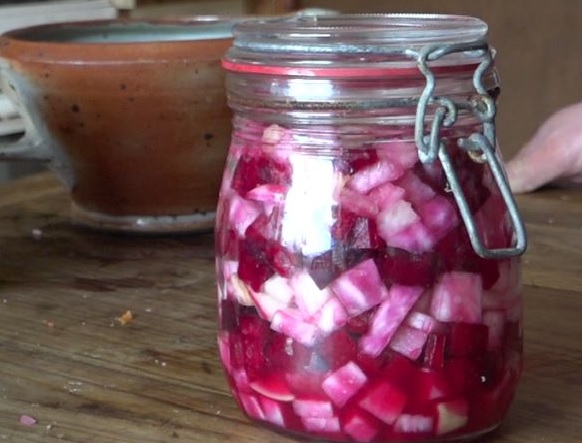
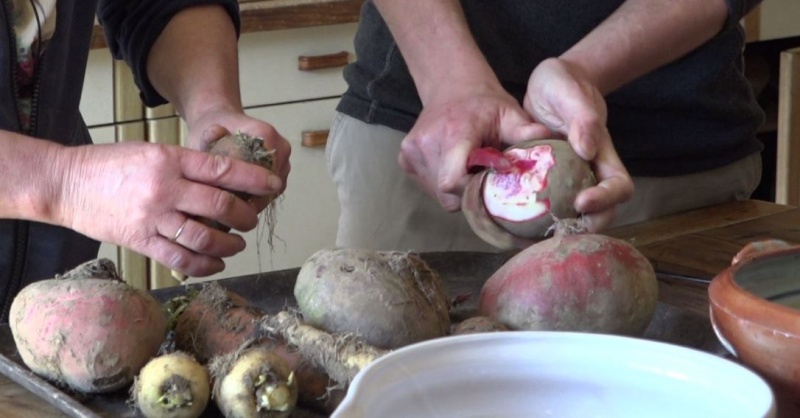
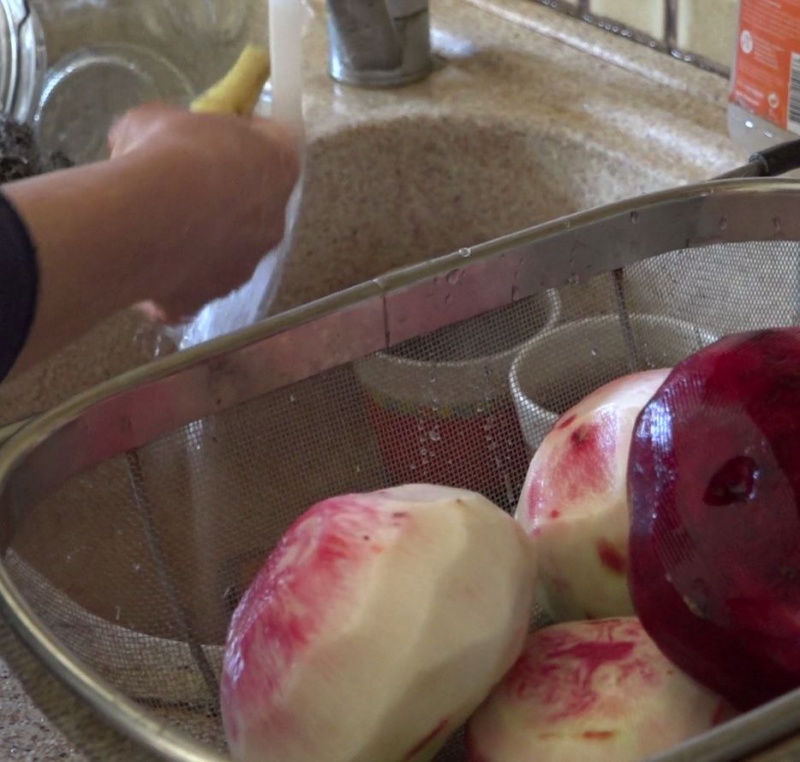
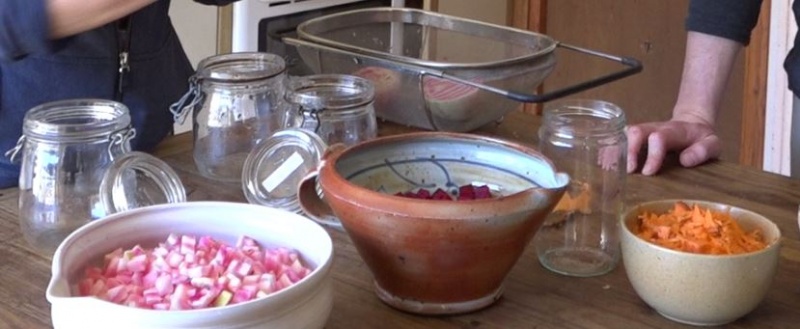
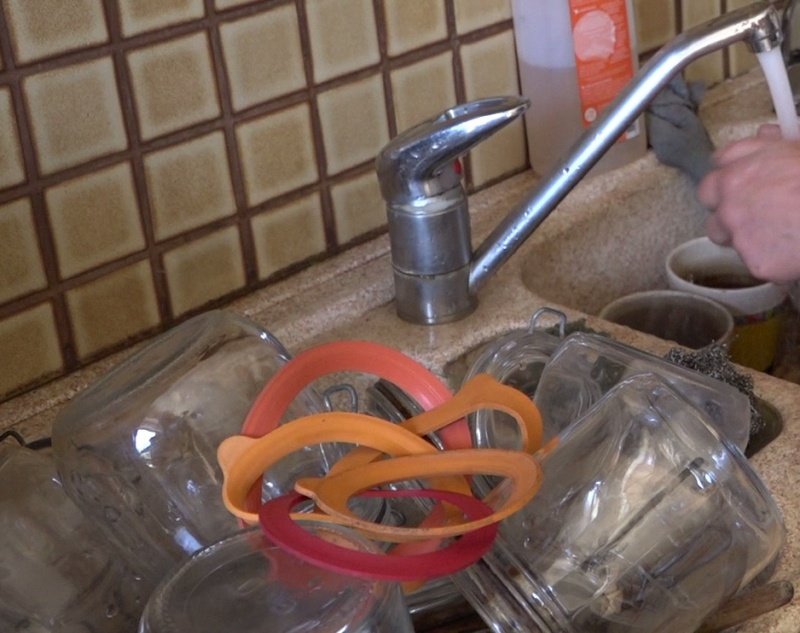
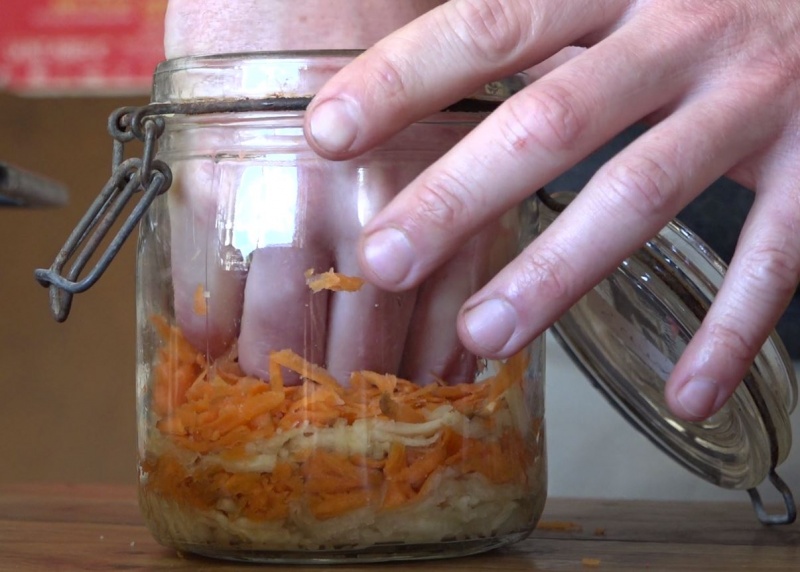
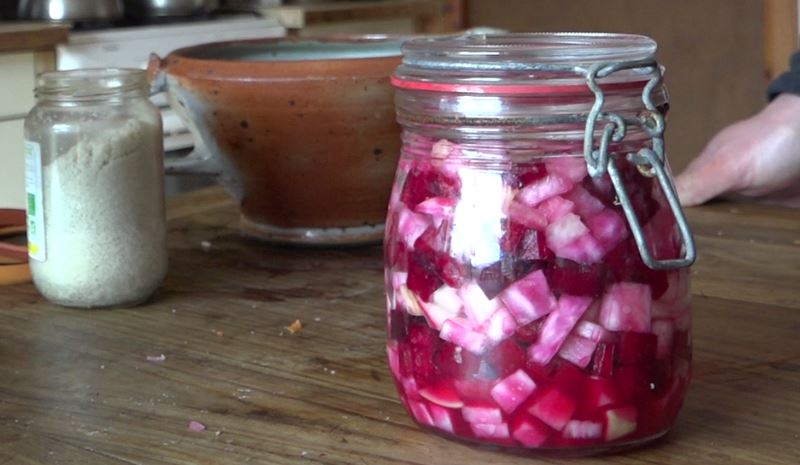
 Français
Français English
English Deutsch
Deutsch Español
Español Italiano
Italiano Português
Português